Giochi dell'Oca e di percorso
(by Luigi Ciompi & Adrian Seville)
(by Luigi Ciompi & Adrian Seville)

|
Giochi dell'Oca e di percorso
(by Luigi Ciompi & Adrian Seville) |

|
 |

Torna alla ricerca giochi (back to game search) |
 |
| Ganzenbord | ||
 |
Versione stampabile
 |
Invia una segnalazione

|
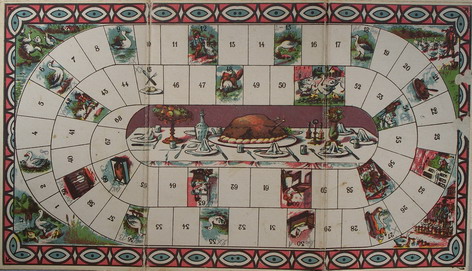 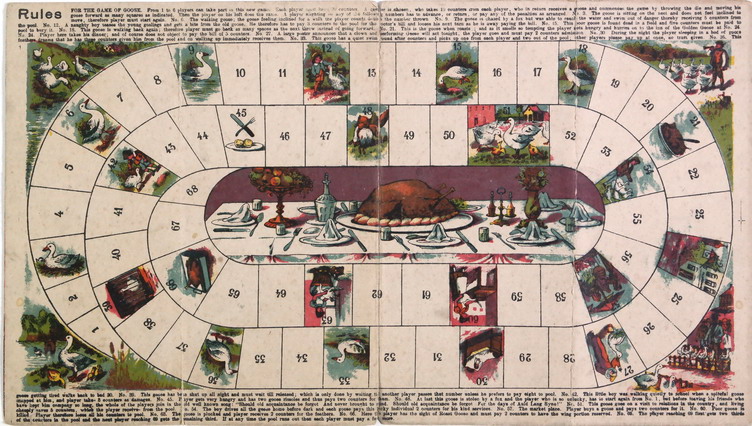 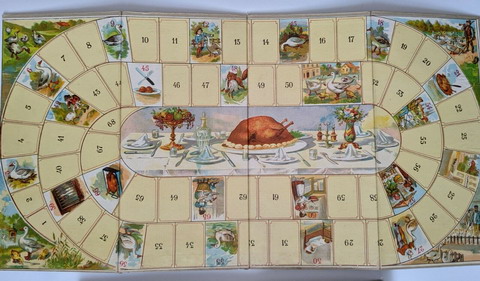 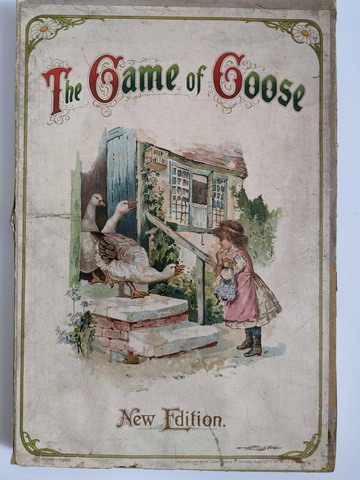 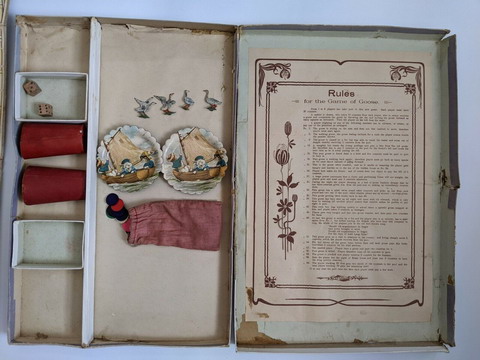   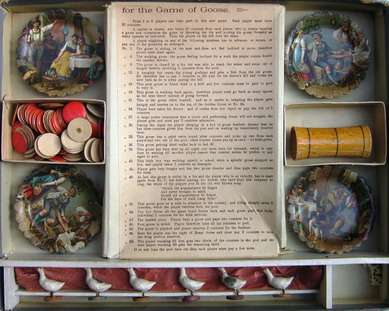 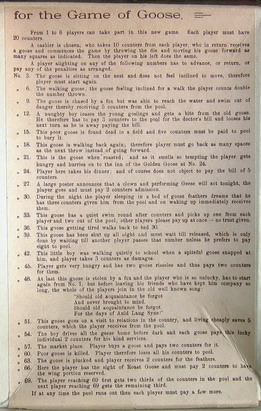 |
primo autore: | Anonimo |
| secondo autore: | J.W.S.&S. Bavaria (Spear) | |
| anno: | 1900ca | |
| luogo: |
Olanda |
|
| periodo: | XX secolo (?/4) | |
| percorso: | Percorso di 68 caselle numerate | |
| materiale: | carta (paper) (papier) | |
| dimensioni: | 000X000 | |
| stampa: | Cromolitografia | |
| luogo acquisto: | ||
| data acquisto: | ||
| dimensioni confezione: | ||
| numero caselle: | 68 | |
| categoria: | Oca | |
| tipo di gioco: | Gioco di percorso | |
| editore: | Spear's | |
| stampatore: | Designed in England, manufactured at "Spear" Works in Germany | |
| proprietario: | Sinninghe Damsté Christine | |
| autore delle foto: | Sinninghe Damsté Christine | |
| numero di catalogo: | 1474 | |
| descrizione: |
Gioco di 68 (69) caselle numerate, spirale, orario, centripeto. REGOLE: non riportate sul tavoliere. CASELLE: mute. REFERENZA 1 The Game of the Goose - Improved Edition. Nuremberg, Germany: Spear Series, [c. 1900]. Chromolithograph on three-panel folding board, 31 × 64 cm., boxed with playing equipment. The board, containing 69 spaces, comes complete with six ceramic geese as tokens, a supply of cardboard counters to be used as stakes, papier-mâché dishes decorated with chromolithographed country scenes to hold the counters, dice and a wooden shaker. The box lid says: “Designed in England. Manufactured at the Spear Works in Germany. Copyright in the United Kingdom etc.” The makers were J. W. Spear and Sons. The history of the company has been well documented.43 From the 1880s, Jacob Wolf Spear (who was born in 1832 and died in 1893 when he hanged himself after being suspected of setting fire to his own factory) had been manufacturing toys and games in Bavaria, at Fürth, mainly for the English market. His family set up a new factory in Nuremberg and production started in 1899. In 1932, production was moved to a factory in England, at Enfield, due to the rise of Nazi Germany - the Spears were Jewish - and this continued until Mattel acquired the firm in 1994. The game itself, though attractively produced, is no improvement on classic Goose. The new rules, of which there are many, are quirky and must have been hard for players to remember. The fundamental Goose-doubling rule does not apply: each goose space has its own rule. One example well illustrates this. For space 33, “This goose has a quiet swim round after counters and picks up one from each player and two out of the pool: other players please pay up at once - no trust given.” There is - despite the claim on the box lid - something very un-English about this game! (Adrian Seville) NOTA: Vedi esemplari Arch. N°408, Arch. N°2284, Arch. N°2857. Exhibitions: - DAMSTE', Christine Sinninghe - BUMA, Hopperus: "The History of the Game of the Goose", Exhibition Museum Joure , 30 October 2004 - 25 February 2005. - SEVILLE, Adrian: "The Royal Game of the Goose four hundred years of printed Board Games". Exhibition at the Grolier Club, February 23 - May 14, 2016. |
|
| bibliografia: |
1) DAMSTE', Christine Sinninghe - BUMA, Hopperus: "The History of the Game of the Goose", Exhibition Museum Joure , 30 October 2004 – 25 February 2005. 2) BUIJNSTERS, P.J. - BUIJNSTERS-SMETS, Leontine: "PAPERTOYS. Speelprenten en papieren speelgoed in Nederland (1640-1920)". Waanders Uitgevers-Zwolle, 2005. 3) SEVILLE, Adrian: "The Royal Game of the Goose four hundred years of printed Board Games". Catalogue of an Exhibition at the Grolier Club, February 23 - May 14, 2016. |
|
| The History of the Game of the Goose Exhibition Museum Joure , 30 October 2004 – 25 February 2005 | ||
Vai alla ricerca giochi Vai all'elenco autori